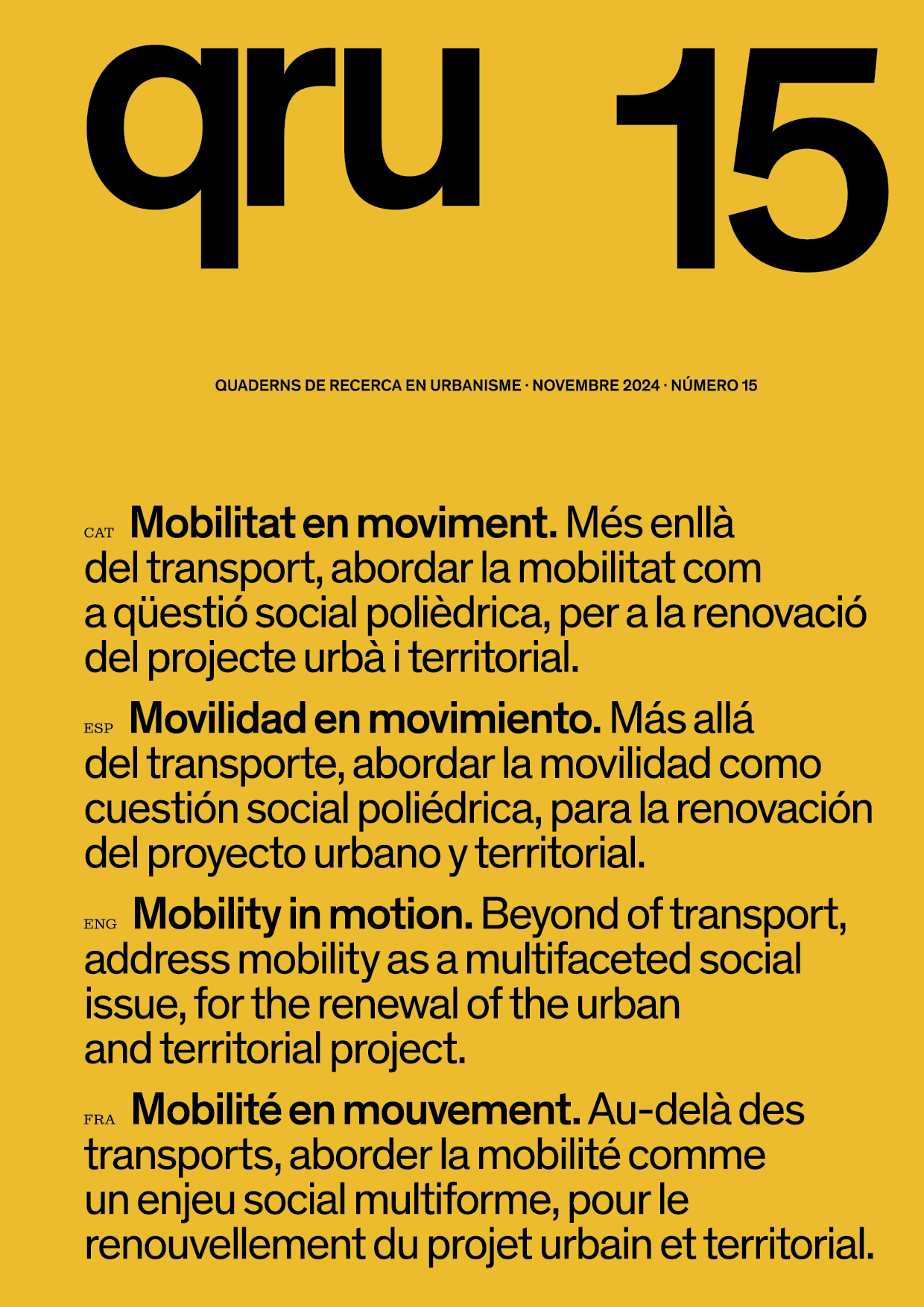La movilidad como vector programático para la cualificación del espacio público en el Área Metropolitana de Lisboa [1998-2023]
DOI:
https://doi.org/10.5821/qru.13411Resum
El artículo ofrece una perspectiva sistematizada de la contribución de las recientes intervenciones de cualificación del espacio público en el Área Metropolitana de Lisboa a la transición de sus lógicas de movilidad y condiciones territoriales. Como parte de MetroPublicNet, un proyecto de investigación financiado por el FCT, el argumento del artículo destaca las principales características y la expresión territorial de los proyectos de espacio público realizados en la región de la capital portuguesa en términos de su contribución a la promoción de una movilidad con bajas emisiones de carbono a través de la mejora de las condiciones para la caminabilidad, los modos activos y el acceso al transporte público. Teniendo en cuenta su carácter complejo y multidimensional, el proyecto busca una lectura combinada con las aportaciones a la promoción de la resiliencia ambiental a través de redes de infraestructuras verdes y azules y el fomento de la cohesión territorial a través de la mejora y conexión de espacios públicos en áreas residenciales más segregadas. Las observaciones y contribuciones finales revelan algunas perspectivas futuras en términos de mecanismos de ensamblaje hacia una lógica incremental de desarrollo del espacio público a la escala de la metrópolis.

Descàrregues
Publicades
Número
Secció
Llicència
Aquellos autores/as que tengan publicaciones con esta revista, aceptan los términos siguientes:
Los autores/as conservarán sus derechos de autor y garantizarán a la revista el derecho de primera publicación de su obra, el cuál estará simultáneamente sujeto a la Licencia de reconocimiento de Creative Commons CC BY-NC-ND- 4.0 que permite a terceros compartir la obra siempre que se indique su autor y su primera publicación esta revista, pero no se pueden cambiar ni se pueden utilizar comercialmente.
Los autores/as podrán adoptar otros acuerdos de licencia no exclusiva de distribución de la versión de la obra publicada (p. ej.: depositarla en un archivo telemático institucional o publicarla en un volumen monográfico) siempre que se indique la publicación inicial en esta revista.
Se permite y recomienda a los autores/as difundir su obra a través de Internet (p. ej.: en archivos telemáticos institucionales o en su página web) antes y durante el proceso de envío, lo cual puede producir intercambios interesantes y aumentar las citas de la obra publicada. (Véase El efecto del acceso abierto).












